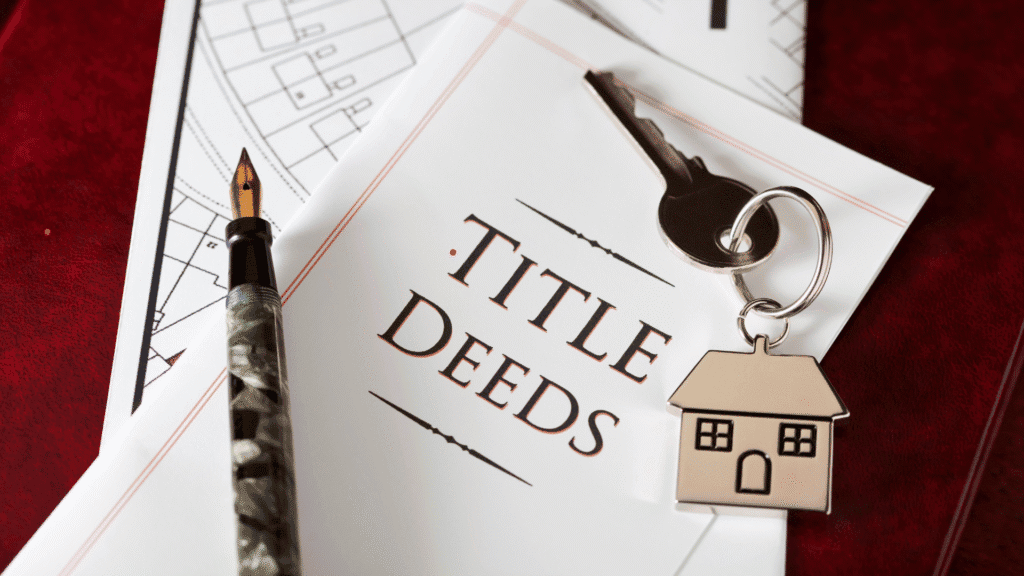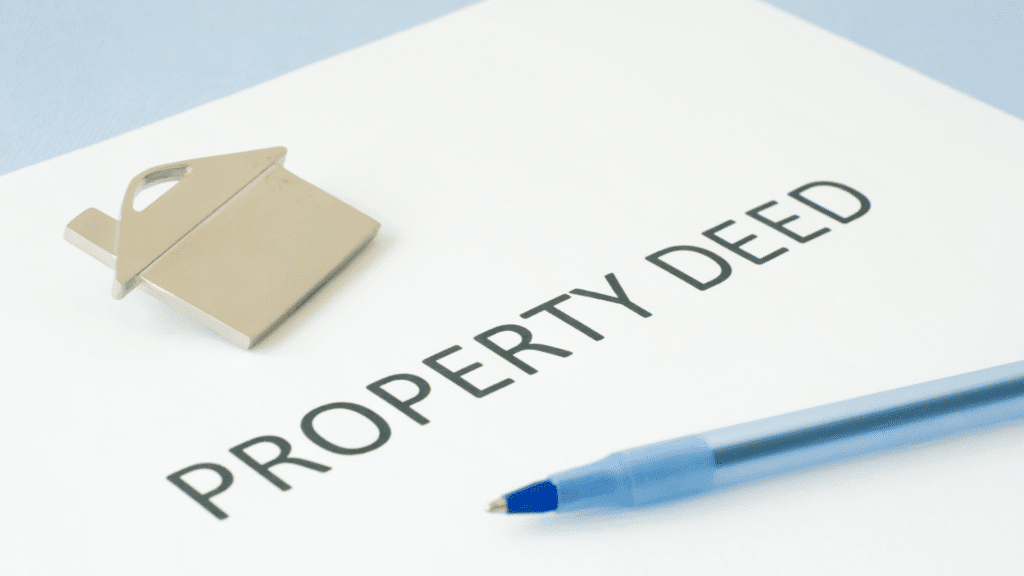Display Table of Contents
- What Is a Deed of Variation?
- Recommended Reading
- Educational Knowledgebase
- Types of Deed of Variation
- Why a Deed of Variation Might Be Needed
- Who Can Make a Deed of Variation?
- Legal Requirements for a Valid Deed of Variation
- Tax Implications of a Deed of Variation
- Recommended Reading
- Educational Knowledgebase
- Deed of Variation in Leasehold Reform
- How to Create a Deed of Variation
- Costs Involved
- Advantages of a Deed of Variation
- Potential Risks and Considerations
- Example Situations Where a Deed of Variation Helps
- How a Deed of Variation Affects Property Sales
- Key Takeaways for Homeowners and Investors
- Conclusion
- Recommended Reading
- Educational Knowledgebase
In the complex world of property ownership and inheritance, few legal tools are as useful
yet as misunderstood as the Deed of Variation. Whether you are dealing with an
inherited estate, updating the terms of a lease, or resolving a family inheritance dispute,
a Deed of Variation can provide the flexibility to make legally binding changes to an existing
agreement or will.
What Is a Deed of Variation?
A Deed of Variation is a formal legal document that allows changes to be made to the
terms of a legal agreement, typically after it has already been finalised. In property law, it
is most commonly used in two situations:
- Inheritance and Wills: Beneficiaries can use a Deed of Variation to change the
distribution of an estate after someone dies. - Leases and Property Ownership: A Deed of Variation may alter the terms of a
lease or freehold title, often to correct an error or update outdated terms.
The key feature of a Deed of Variation is that it legally amends an existing agreement while
keeping the original document in place. It does not cancel the original — it simply modifies
specific clauses or provisions.

Types of Deed of Variation
Although the term covers several different uses, Deeds of Variation usually fall into one of
two main categories:
1. Deed of Variation to a Will or Estate
When a person passes away, their assets are distributed according to their will or, if there is
no will, under the rules of intestacy. However, circumstances sometimes arise where the
beneficiaries wish to change how the estate is divided. For example:
- To provide for a family member who was left out of the will.
- To redistribute assets in a more tax-efficient way.
- To simplify the estate or correct errors in the original document.
In these situations, beneficiaries can agree to vary the will or intestacy using a Deed of
Variation. This must be done within two years of the date of death if the parties
want the variation to be recognised for inheritance tax (IHT) or capital gains tax (CGT)
purposes.
2. Deed of Variation for Leasehold Property
In property law, a Deed of Variation is often used to change the terms of a lease. This can
occur for several reasons, such as:
- Correcting an error in the original lease document.
- Extending or reducing the length of a lease term.
- Changing ground rent or service charge provisions.
- Adding or removing shared responsibilities or restrictions.
A Deed of Variation for leasehold property is signed by both the freeholder and the
leaseholder (and sometimes the mortgage lender, if there is one) to confirm their
mutual agreement to the change.
Why a Deed of Variation Might Be Needed
There are many practical and financial reasons why someone might need a Deed of Variation.
Common examples include:
For Inheritance
- Tax efficiency: Beneficiaries may redirect assets to others (for example,
grandchildren) to reduce the overall inheritance tax burden. - Family fairness: To include individuals who were unintentionally left out of
a will. - Charitable giving: Adding a charitable donation posthumously can provide
tax relief and fulfil the deceased’s wishes.
For Property Ownership or Leases
- To update or modernise outdated lease clauses.
- To comply with lender requirements when remortgaging.
- To fix boundary or access rights errors discovered in title deeds.
- To address unsafe or unfair ground rent provisions in older leases.
Without a valid Deed of Variation, any informal or verbal agreements to alter an existing
legal document are not enforceable in law.
Who Can Make a Deed of Variation?
The parties who can create and sign a Deed of Variation depend on the type of agreement being
changed:
- For wills and estates – all affected beneficiaries must agree and sign the
variation. - For leases or property ownership – the landlord (freeholder) and
tenant (leaseholder) must agree, and if there is a mortgage, the lender may
also need to consent.
A solicitor usually drafts the document to ensure it complies with the relevant property and
tax laws.
Legal Requirements for a Valid Deed of Variation
For a Deed of Variation to be valid and enforceable, it must meet certain formal requirements:
- It must be made in writing and clearly state the changes being made.
- It must be signed by all parties involved and witnessed (each signature needs an independent
witness). - It should include a statement that the parties intend the document to take legal effect as a
deed. - For inheritance variations, the document must specify whether the parties want the variation
to be treated as if it had been made by the deceased for tax purposes.
Once signed and witnessed, the Deed of Variation becomes legally binding and can be submitted
to the relevant authorities — such as HMRC for tax recognition or HM Land Registry for property
title amendments.
Tax Implications of a Deed of Variation
One of the key reasons beneficiaries choose to create a Deed of Variation after death is to
achieve a more favourable tax outcome. When executed correctly and within the two-year limit,
the variation is treated as though the deceased had made the change themselves.
Inheritance Tax (IHT)
A Deed of Variation can reduce inheritance tax liability by redirecting part of the estate to
a spouse, civil partner, or charity — all of which may qualify for exemptions or reliefs.
Capital Gains Tax (CGT)
Similarly, if a Deed of Variation is made within two years and includes the correct
statements, the transfer of assets under the variation is ignored for CGT purposes, preventing
immediate tax charges.
However, if the variation is made outside of the two-year window or lacks the required
declarations, the tax benefits are lost, and the transaction may be treated as a new transfer
of assets for tax purposes.
Deed of Variation in Leasehold Reform
In recent years, leasehold reform has become a major issue in the UK property market.
Thousands of leaseholders have discovered unfair or escalating ground rent clauses that make
their homes difficult to sell or remortgage. In such cases, a Deed of Variation can provide a
practical solution.
For example, the freeholder and leaseholder may agree to replace a clause where the ground rent
doubles every ten years with a fairer, fixed rate. This change is recorded by way of a Deed of
Variation and then registered with HM Land Registry.
Lenders often insist that these variations are made before approving a mortgage, particularly
if the original lease terms could affect the property’s long-term value.
How to Create a Deed of Variation
The process varies slightly depending on whether the variation relates to a will or a lease,
but the general steps are as follows:
- Seek legal advice: Consult a qualified solicitor who specialises in property
or probate law to discuss the purpose and implications of the variation. - Draft the deed: The solicitor will prepare the document, detailing the
original agreement, the variation, and the new agreed terms. - Obtain signatures: All affected parties must sign the deed in the presence of
witnesses. - Register the change: For property variations, the deed must be registered
with HM Land Registry. For inheritance variations, it may be submitted to HMRC if tax
benefits are being claimed.
Costs Involved
The cost of a Deed of Variation can vary depending on complexity. As a general guide:
- A simple inheritance variation may cost between £250 – £750 + VAT.
- A leasehold variation can range from £500 – £1,500 + VAT, depending on the
number of parties, lender involvement, and registration requirements.
Additional costs, such as Land Registry fees or notice charges to freeholders, may also apply.
Advantages of a Deed of Variation
- Provides flexibility to correct or modernise outdated legal documents.
- Can reduce tax liabilities when used for inheritance planning.
- Prevents disputes between family members or property stakeholders.
- Maintains legal clarity while preserving the original document’s validity.
Potential Risks and Considerations
- All relevant parties must agree; without consent, the deed cannot proceed.
- Mistakes in drafting or tax declarations can have serious financial consequences.
- Late execution (after the two-year window for wills) removes tax benefits.
- Registration errors could delay property sales or refinancing.
For these reasons, it is highly recommended to instruct a qualified solicitor to prepare and
register a Deed of Variation.
Example Situations Where a Deed of Variation Helps
To illustrate how flexible this tool can be, here are some common real-world examples:
- A family uses a Deed of Variation to redirect part of an inheritance to a grandchild,
reducing inheritance tax. - A leaseholder and freeholder agree to remove a doubling ground rent clause to enable a
remortgage. - A group of flat owners uses Deeds of Variation to update maintenance responsibilities and
service charge clauses in a shared building. - Beneficiaries of an estate correct a clerical mistake in a will that misallocated assets.
How a Deed of Variation Affects Property Sales
When selling a leasehold or freehold property, a previously executed Deed of Variation can
affect the transaction. Buyers and their solicitors will review it as part of the due
diligence process. Any unregistered or poorly drafted variation can delay or even derail a
sale.
Ensuring that any variations are properly registered and supported by legal documentation
avoids complications during conveyancing.
Key Takeaways for Homeowners and Investors
- A Deed of Variation is a legally binding way to amend an existing document,
such as a will, lease, or title deed. - For inheritance, it allows redistribution of assets and potential tax savings within two
years of death. - For property, it can modernise leases, correct errors, or make a property more marketable.
- Legal advice is essential to ensure compliance with tax and land registration laws.
Whether you are inheriting a property, managing a leasehold, or preparing to sell your home,
understanding how a Deed of Variation works can save you time, money, and future legal
complications.
Conclusion
The Deed of Variation is one of those quiet but powerful tools in property and estate law that
can make a significant difference in how assets and agreements are managed. It provides a
structured, legally secure way to adapt to life’s changes — whether those changes come from new
financial realities, family circumstances, or evolving legislation.
For tailored advice on using a Deed of Variation for your property or inheritance situation,
always consult a qualified solicitor. And if you are researching your options,
PropertyHelp.uk offers detailed insights, guides, and resources to help you make
confident, informed property decisions.

